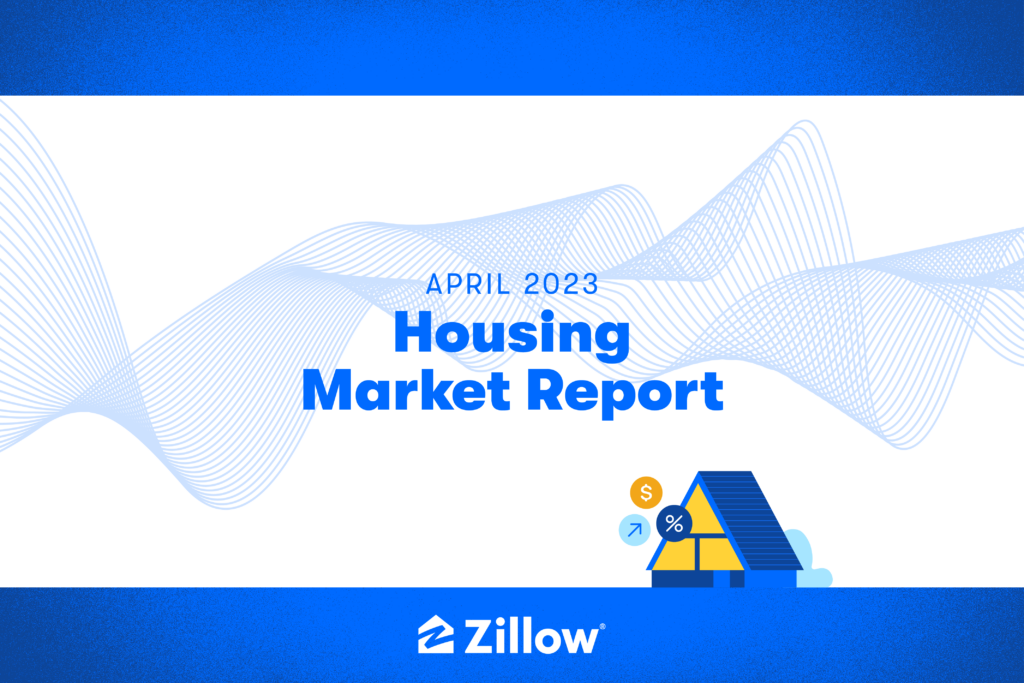Competition for homes is heating up again (April 2023 Market Report)
Steady buyer demand coupled with scarce new listings pushed up price growth and pending sales

Steady buyer demand coupled with scarce new listings pushed up price growth and pending sales

The typical U.S. home value climbed 1.0% from March to April, the strongest growth since last June, and relatively normal for this time of year. Still, a “normal” springtime seller’s season represents a remarkable turnaround from the second half of 2022, which was much cooler than normal as buyers retreated in the face of affordability challenges. Those challenges are still acute – despite being 2.2% lower than its peak last July, the Zillow Home Value Index is still 1.5% higher than one year ago and 38% higher than in April 2020, an 11% average annual growth rate over the past 3 years.
April data indicate that housing has returned to a seller’s market. Buyers flock to open houses at this time of year in hopes of securing a home in time to move in by early summer, yet this year will see far fewer new listings than “normal”, too.
Monthly price changes ranged from virtually flat (-0.1%) in New Orleans, to 1.9% growth in Kansas City, which had the fastest monthly growth for the second month in a row.
Home values are down from year-ago levels in 22 major markets, most significantly in Austin (-10.0%), San Francisco (-9.9%), San Jose (-9.5%), Seattle (-7.5%), and Sacramento (-6.8%). But all those markets posted monthly gains, including particularly strong gains of 1.3% in San Francisco, 1.5% in San Jose, and 1.2% in Seattle – all faster than the 1.0% national average price growth this month. These West Coast markets experienced some of the biggest contractions in the flow of new listings, helping to explain why their price declines have gone into reverse this spring.
The new listings drought deepens
There were 28.0% fewer new listings than last April, an even steeper year-over-year drop than observed in March (-22.2%). Remarkably, there were slightly fewer (-0.5%) new listings in April than in March, defying the typical seasonal trend of climbing new listings.
All told, about half a million fewer new listings have entered the market in the first four months of 2023 than in 2019’s first four months – a deficit of 30%. Many would-be sellers don’t want to let go of their homes, on which they’re paying about 3% in mortgage interest in many cases, when they’d have to pay 6% or more on a new 30-year loan.
Myriad other factors may be contributing to the low flow of new listings. Some owners may prefer to simply rent out the homes they’ve moved out of, with the help of new digital solutions for rental property managers.Long-term owners in high-cost markets like those on the West Coast might not even worry about interest rates if moving to a lower-priced home or lower-cost market, as they could pay cash, but are avoiding selling in order to avoid a steep capital gains tax obligation on their home value appreciation in excess of $500,000 (or $250,000 for single tax filers). Finally, homeowners taking new remote jobs might not need to move like they would have had to relocate for a new in-person job.
Active inventory in April was only up 2.9% from last year, and stands a whopping 45.8% below April 2019 levels. That minuscule year-over-year growth is a major step down from recent months: In January, home shoppers benefited from 19.5% more active listings to choose from than in January of last year. The very low inventory is likely a major reason that home prices have begun to rise again.
Newly pending listings were down 21.2% year-over-year in April, a more modest step down than March’s 24.1% decline from last year. It’s not clear why this measure improved from March, but one simple possibility might be a return to more normal seasonal trends – the first quarters of 2021 and 2022 saw pending sales ramp up sooner than pre-pandemic norms, while buyers were a little slower out of the blocks this year but are now hitting their stride.
Lower mortgage rates in April is another likely factor behind buyers’ strength. Rates averaged 6.34% in the weekly April readings of Freddie Mac’s Primary Mortgage Market Survey, down from 6.54% in March, and closer to February’s 6.26% average rate, the lowest since last September. When mortgage rates declined this winter, there was a modest rebound in pending sales sooner than in new listings; a similar sequence might be playing out now, in April and May.
Asking rents climbed 0.6% month-over-month, a nearly-normal monthly growth rate for this time of year. Rents are now 5.3% higher than in April of last year. See more on rents in the April 2023 Rental Market Report.